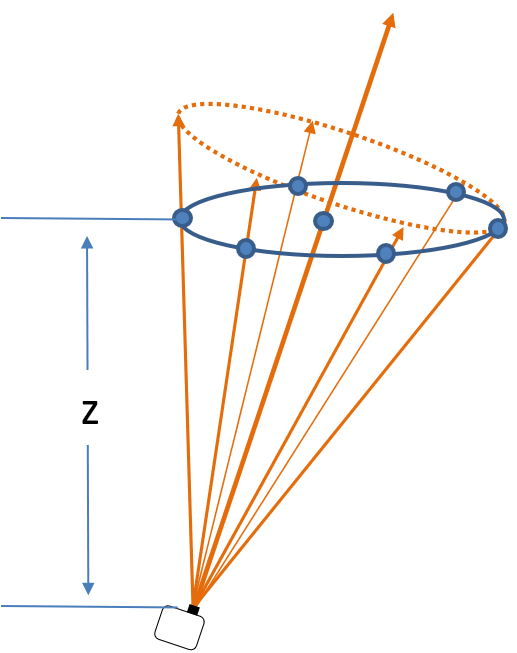
A new value-added product (VAP) developed specifically for the Multidisciplinary Drifting Observatory for the Study of Arctic Climate (MOSAiC) expedition is now available for evaluation. This VAP derives profiles from Doppler lidar measurements collected on the research icebreaker R/V Polarstern, which drifted through the central Arctic during MOSAiC.
The Doppler Lidar Motion Correction Wind Profiles (DLMCPROF-WIND) VAP provides profiles of wind speed and direction. These profiles are computed using motion-corrected data from the Atmospheric Radiation Measurement (ARM) user facility’s Doppler lidar.
The VAP team adapted the wind retrieval technique applied in DLMCPROF-WIND from a method that ARM uses for processing data from its ground-based Doppler lidars.
For operation on a moving platform, the normal wind profile scans are not in general vertically oriented. To retrieve the winds at a given height, the DLMCPROF-WIND VAP interpolates the radial velocities from each beam in the scan to that height, as shown in the figure. The wind vector at that height is then obtained by solving a linear system using parameters derived from radial velocity, azimuth angle, and elevation angle, as well as summations performed over all beams in the scan.
The final reported wind profiles represent averages taken over several successive scans.
DLMCPROF-WIND evaluation data from October 11, 2019, through September 20, 2020, are now available.
More information about DLMCPROF-WIND can be found on the VAP web page.
Feedback on the data is encouraged to help improve this evaluation product. Please send feedback or questions to VAP contact Rob Newsom or ARM translator Damao Zhang.
Access DLMCPROF-WIND data in the ARM Data Center. (Go here to create an account to download the data.)
Data can be referenced as doi:10.5439/1872823.
# # #ARM is a DOE Office of Science user facility operated by nine DOE national laboratories.

